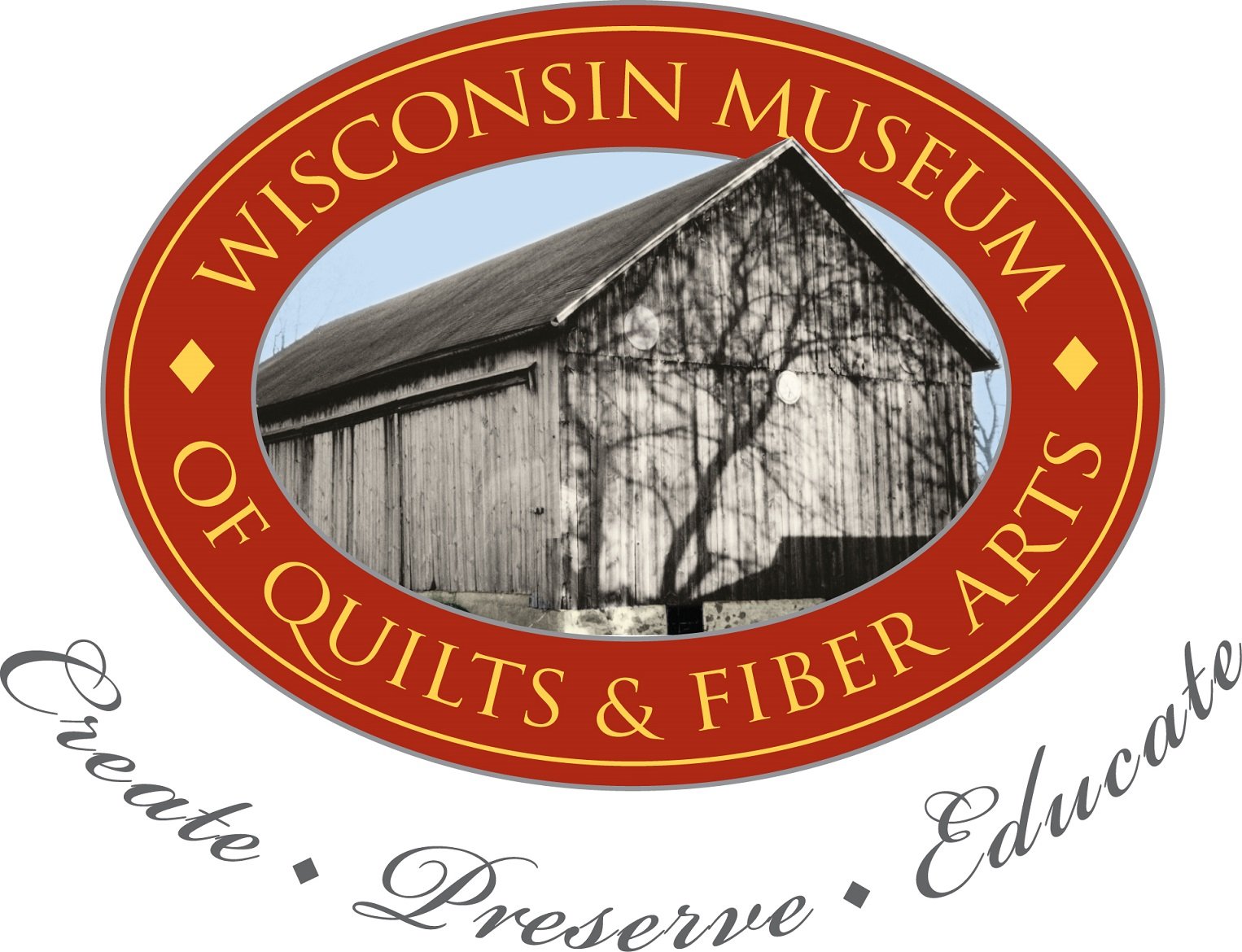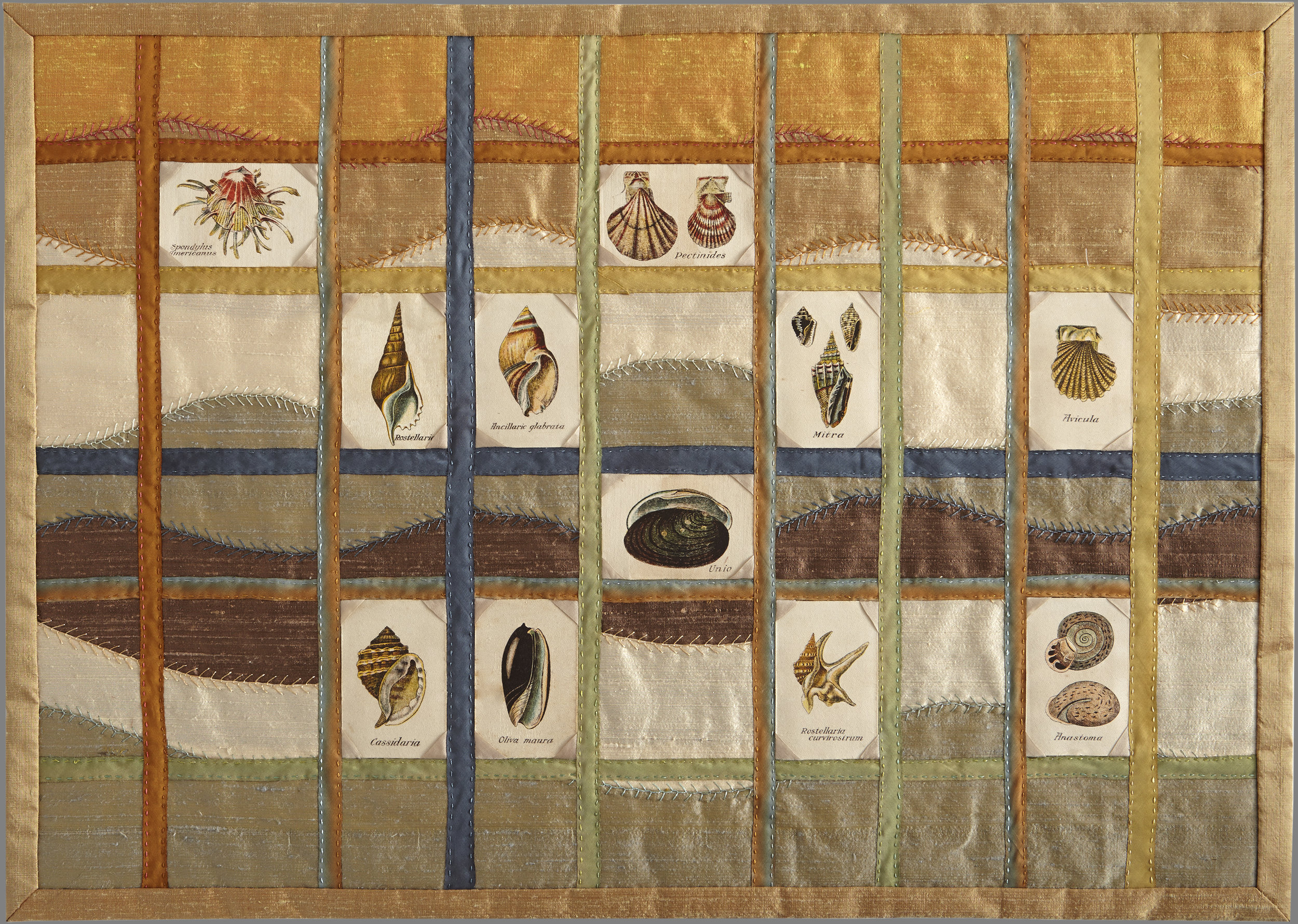Greta Mikkelsen: Tobacco Silks Reimagined on Exhibit May 2–August 11, 2019
Wisconsin Museum of Quilt & Fiber Arts
Debuts Solo Exhibition of Stunning Contemporary Quilts Featuring Antique Tobacco Silks
Greta Mikkelsen, Types of Seashells, 2014; African Tobacco Company silks, 1928; silk dupioni; 26 1/2 x 19 in. Courtesy of the artist.
Cedarburg, Wis. – Greta Mikkelsen: Tobacco Silks Reimagined at the Wisconsin Museum of Quilts & Fiber Arts (WMQFA) debuts Mikkelsen’s stunning contemporary quilts inspired by antique tobacco silks. Tobacco silks were found in cigarette packages at the turn of the twentieth-century as a marketing strategy initially intended to increase competition among brands and ultimately to entice women to smoke. Women clientele were encouraged to collect the precious silk inserts with images of glamorous women, decorative objects, birds, and flowers,
among others, and incorporate them into sewing projects.
Mikkelsen became fascinated by tobacco silks when she saw them fashioned into a lustrous vintage pillow top. Captivated by the dichotomy between the preciousness of the silk inserts and the insidiousness of the marketing and manufacturing of the tobacco products they represented, she began integrating the silks into handcrafted quilts that preserve the medium’s delicacy and timeworn qualities while reimagining their context.
The exhibition features twenty-three quilts by Mikkelsen on view for the first time. Each quilt presents a collection of a given motif: ceramic art, types of seashells, and actresses, to name a few, are grouped together in Mikkelsen’s sensitive designs. Enhancing the physical qualities of the silks, Mikkelsen hand-pieces each quilt with silk taffeta and dupioni, vintage silk sari and kimono fabrics, hand-dyed silk ribbon, beads, and satin embroidery floss. Every quilt presents an opportunity for Mikkelsen to experiment with material, color, pattern, and execution. Taken together, the quilts speak to the allure of stylish collectibles and the exploitation of desire from a bygone era.
Greta Mikkelsen, Butterflies and Moths, 2015; LEA Tobacco Company silks, 1911–22; silk taffeta, hand-dyed silk ribbon; 30 x 22 in.
Greta Mikkelsen: Tobacco Silks Reimagined is curated by WMQFA. WMQFA will hold a Family Fun Day during the run of the exhibition on Saturday, June 22, from noon to 4:00 p.m. with free admission to the public. A members’ gallery night will take place at WMQFA on Saturday, May 4, from 5:30–7:30 p.m. This exhibition is supported by a grant from the Wisconsin Arts Board.
Exhibition Highlights Include:
- Butterflies and Moths (2015). Mikkelsen’s free-flowing composition displays a collection of butterflies and moths from 1911 to 1922 printed by the LEA Tobacco Company. Pieced on silk taffeta, with hand-dyed silk ribbon, the figures appear to be flying together in a synchronized dance.
- Women of the World (2019). This dramatic arrangement by Mikkelsen of portraits of women from the 1920s printed by the Turmac Tobacco Company enhances the sense of allure of the glamorous cameos.
- Types of Seashells (2014). Capturing the undulations of water and sand, Mikkelsen’s design integrates seashells from 1928 printed by the African Tobacco Company with hand-pieced silk dupioni.
About the Wisconsin Museum of Quilts & Fiber Arts
The Wisconsin Museum of Quilts & Fiber Arts (WMQFA), located just east of historic downtown Cedarburg, Wisconsin, is dedicated to creating, preserving and displaying cultural treasures and educating the public about the artistic, cultural, historic and social importance of quilts and fiber arts. A primary mission is to teach people of all ages and abilities the time-honored traditions of fiber arts such as quilting, weaving, embroidery and knitting. Our 1850s farmstead setting has allowed us to combine preservation of craft with preservation of historical agriculture buildings, offering a unique setting for enjoying an afternoon, taking a class, attending a lecture, or playing in a farm setting. The WMQFA is a 501(c)3 non-profit. For more information go to www.wiquiltmuseum.com.
Contact curator@wiquiltmuseum for press images


